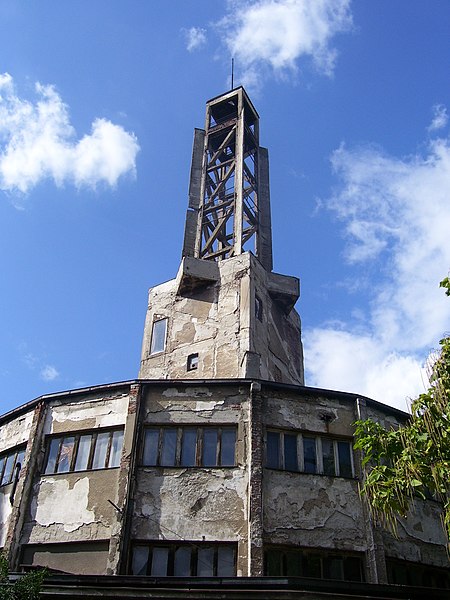Sajmište concentration camp

The Sajmište concentration camp (pronounced [sâjmiːʃtɛ]) was a Nazi German concentration and extermination camp during World War II. It was located at the former Belgrade fairground site near the town of Zemun, in the Independent State of Croatia (NDH). The camp was organized and operated by SS Einsatzgruppen units stationed in occupied Serbia. It became operational in September 1941 and was officially opened on 28 October of that year. The Germans dubbed it the Jewish camp in Zemun (German: Judenlager Semlin). At the end of 1941 and the beginning of 1942, thousands of Jewish women, children and old men were brought to the camp, along with 500 Jewish men and 292 Romani women and children, most of whom were from Niš, Smederevo and Šabac. Women and children were placed in makeshift barracks and suffered during numerous influenza epidemics. Kept in squalid conditions, they were provided with inadequate amounts of food and many froze to death during the winter of 1941–42. Between March and May 1942, the Germans used a gas van sent from Berlin to kill thousands of Jewish inmates. With the gassings complete, it was renamed Zemun concentration camp (German: Anhaltelager Semlin) and served to hold one last group of Jews who were arrested upon the surrender of Italy in September 1943. During this time it also held captured Yugoslav Partisans, Chetniks, sympathizers of the Greek and Albanian resistance movements, and Serb peasants from villages in other parts of the NDH. An estimated 32,000 prisoners, mostly Serbs, passed through the camp during this period, 10,600 of whom were killed or died due to hunger and disease. Conditions in Sajmište were so poor that some began comparing it to Jasenovac and other large concentration camps throughout Europe. In 1943 and 1944, evidence of atrocities committed in the camp was destroyed by the units of SS-Standartenführer Paul Blobel, and thousands of corpses were exhumed from mass graves and incinerated. In May 1944, the Germans transferred control of the camp over to the NDH, and it was closed that July. Estimates of the number of deaths at Sajmište range from 20,000 to 23,000, with the number of Jewish deaths estimated at 7,000 to 10,000. It is thought that half of all Serbian Jews perished at the camp. Most of the Germans responsible for the operation of the camp were captured and brought to trial. Several were extradited to Yugoslavia and executed. Camp commander Herbert Andorfer and his deputy Edgar Enge were arrested in the 1960s after many years of hiding. Both were given short prison sentences in West Germany and Austria, respectively, though Enge never served any time given his old age and poor health. The derelict complex was declared a cultural monument on 9 July 1987. National Assembly of Serbia adopted the law which established the Memorial Center "Staro Sajmište" on 24 February 2020. Reconstruction of the central tower, as the first step in the adaptation of the remains into the memorial center and museum began on 27 July 2022.
Excerpt from the Wikipedia article Sajmište concentration camp (License: CC BY-SA 3.0, Authors, Images).Sajmište concentration camp
Сајмиште, Belgrade New Belgrade (New Belgrade Urban Municipality)
Geographical coordinates (GPS) Address Nearby Places Show on map
Geographical coordinates (GPS)
| Latitude | Longitude |
|---|---|
| N 44.812777777778 ° | E 20.445 ° |
Address
Сајмиште 20а
11000 Belgrade, New Belgrade (New Belgrade Urban Municipality)
Central Serbia, Serbia
Open on Google Maps









